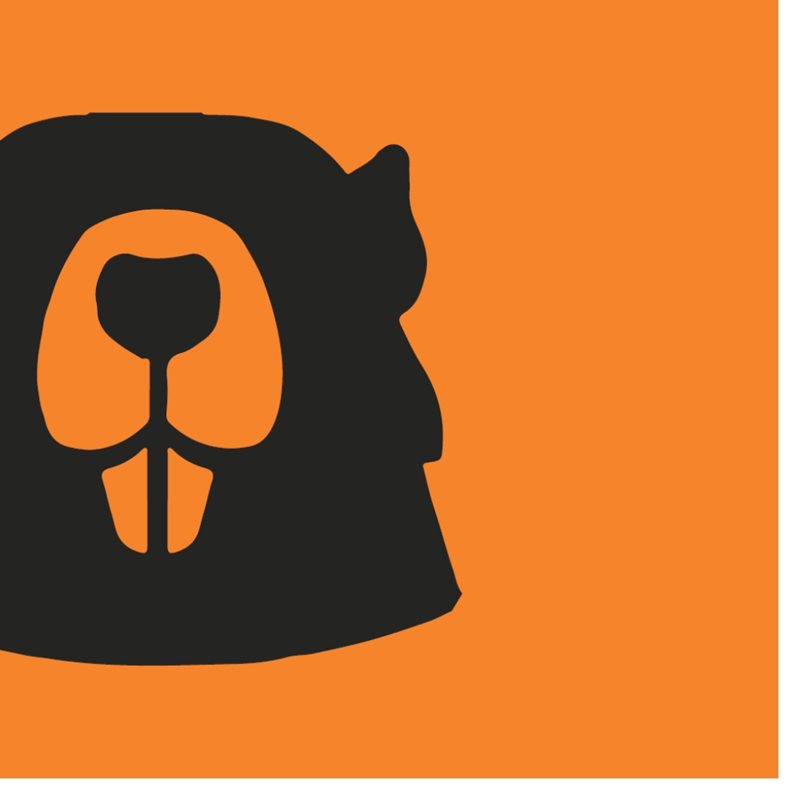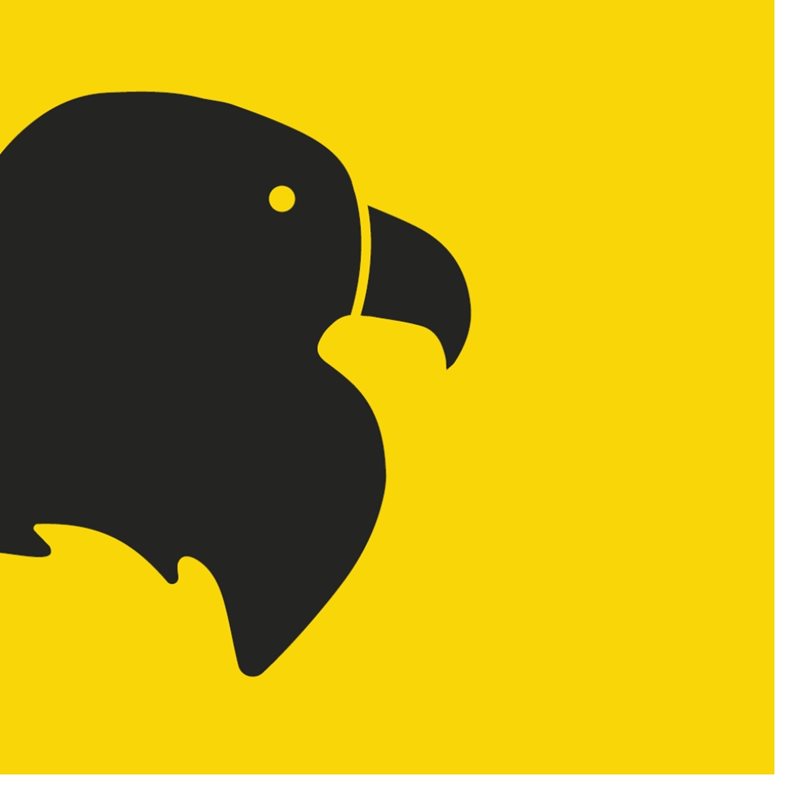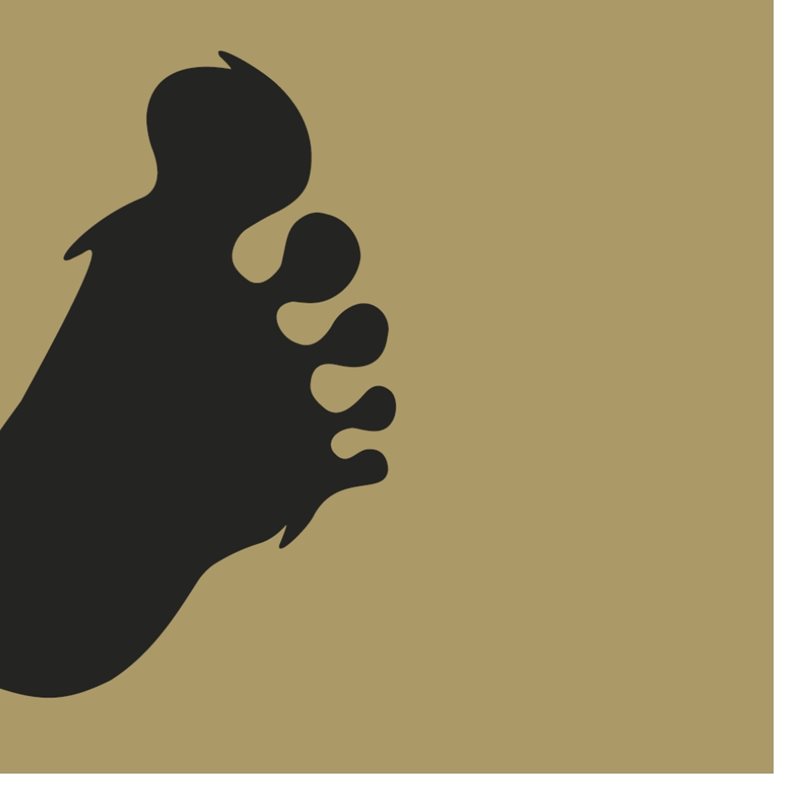St. Lawrence College is located on the traditional territory of the Haudenosaunee & Anishinaabe peoples who continue to call these lands their home. SLC is grateful to learn, live, work, and play on these lands. As you navigate campus you will see directional wayfinding that incorporates elements from their practices and teachings.
The Tree of Peace
The Great Law of Peace, also known as the Kaianerekowa (guy-yaw-ne-let-go-wa), was created by Haudenosaunee people and is one of the earliest examples of a formal democratic governance structure. The Tree of Peace symbolizes the alliance of five nations and the binding force among the Mohawk, Oneida, Onondaga, Cayuga, and Seneca with the Tuscarora Nation joining later, making it six nations, known today as the Haudenosaunee Confederacy.
The Tree of Peace also symbolizes unity, peace, strength, diplomacy, governance, cultural identity, inclusivity, environmental stewardship, and reminds us that all individuals within a community belong, are valued, and their well-being and growth are prioritized. The Haudenosaunee symbolizes these principles and others through the imagery of the great white pine tree often referred to as the Tree of Peace, or the Great Tree of Peace.
See how each campus’ wayfinding will incorporate Indigenous teachings that are specific to the territory where it is located:
The Seven Grandfathers
The Seven Grandfathers were Spirits who were given the responsibility of watching over the Anishinaabe people by Creator. They sent a Messenger down to earth to find someone to learn the Anishinaabe way of life and teach Anishinaabe values to others.
After seven years of teaching a young boy, the Grandfathers each gave him a principle to share with the Anishinaabe people. These principles, known as the Seven Grandfather Teachings, are Love, Respect, Courage, Truth, Honesty, Humility, and Wisdom.
The Seven Grandfather Teachings are a set of guiding principles that must be used together to live a good life.
Across the Kingston Campus you will find stories of The Seven Grandfather Teachings that date back to the beginning of time and are a set of guiding principles given to the Anishinaabe people, providing them with the tools to live a good life. They have been passed down from generation to generation for thousands of years through stories and ceremonies.
Many Indigenous organizations and communities have adopted the Seven Grandfather Teachings, adapting them to align with their own values. The Teachings encompass the values and morals that all human beings should aim to live by and provide guidance in living in harmony with each other and with all of Creation.

Amik (ah' - mik) | Tsiani:to (Ja-KNEE-doe) | Beaver
(Orange)
Wisdom: Wisdom is taught to us by the beaver, who use their natural gifts wisely to ensure their survival. They alter their surroundings in an environmentally friendly and sustainable way for the benefit of their family and their community. They find purpose and satisfaction in doing what they are meant to do. The beaver reminds us that we all have gifts and a purpose in this world.
Wisdom is the combination of all the Grandfather Teachings and our life experiences. Wisdom is the ability to make decisions based on our gifts of knowledge and experience. We should treasure these and use them wisely. We should appreciate the gifts of others and respect our limitations and those of all our surroundings.

Ma'iingan (my - in' - gun) | Okwáho (Oh-GWA-ho) | Wolf
(Blue)
Humility: Humility is taught to us by the wolf. The wolf is strong and powerful alone but finds its greatest strength when part of a pack. Every wolf in the pack is equally important, and no role is more important than another.
The wolf teaches us that humility gives strength to families and communities. Humility is to know that we are a sacred part of Creation. To live with humility is to live life selflessly, respecting our place and feeling pride in our people, generously praising their accomplishments.
 Migizi (mi - gee' - see) | :kweks (Ah-gweeks) | Eagle
Migizi (mi - gee' - see) | :kweks (Ah-gweeks) | Eagle
(Yellow)
Love: Love is taught to us by the eagle. The eagle flies the highest of all birds and thus is closest to Creator. From its lofty vantage point, the eagle sees all of Creation.
Love is one of the hardest Teachings, especially if one has been hurt, but love brings great peace. When we live by the Seven Grandfather Teachings and see ourselves as the eagle does, we are able to love who we are. And once we love ourselves, we can love others. We will then be at peace with ourselves, with all life, and with Creator.

Miskwaadesi (mis-kwa - day'- see) | A'nó:wara (ah-NO-wah-la) | Turtle
(violet)
Truth: Truth is taught to us by the turtle, who was here when all life was created and carries teachings related to the beginning of life on its back. The turtle reminds us that all life is sacred.
We know who we are in our heart. By knowing that, we also know the truth. We must understand, speak, and feel the truth, and respect its power. Our emotional, physical, mental, and spiritual gifts will guide each one of us in our journey of truth.
 Bizhiki (bi' -shi - kee) | Tsihstekeriià:kon (gee-stay-Lee-YA-goon) | Buffalo
Bizhiki (bi' -shi - kee) | Tsihstekeriià:kon (gee-stay-Lee-YA-goon) | Buffalo
(pink)
Respect: Respect is taught to us by the buffalo. No animal was more important to Indigenous people than the buffalo, who provided everything they needed for survival, including hides for warmth and shelter, meat for food, and bones for tools. By giving their life and every part of their being, the buffalo showed respect for the needs of others. In turn, the people showed respect for the buffalo. The buffalo reminds us to be attentive to the balance of all living things, to share and give away what we do not need, and to honour Mother Earth and all Creation.

Makwa (mah' - kwa) | Ohkwá:ri (Oh-GWAH-lee) | Bear
(green)
Bravery: Bravery is taught to us by the bear. Bears are known to valiantly confront danger. Overcoming challenges can be difficult, but we should meet them with the same bravery and strength as a mother bear protecting her cubs. We should rely on our inner strength to be ourselves, stand up for what we believe in, and do what is right for ourselves, our family, and our community. Facing our fears with courage enables us to live a full life.

Sabe (sah’ – bay) | Sasquatch
(tan)
Honesty: Honesty is taught to us by the sabe (a mythical giant like the Sasquatch) who is believed to be closer to the spirit world than humans and reminds us that we must be true to who we are, living every day with honesty and integrity.
Being honest with ourselves first allows us to be honest with others. We must be truthful and trustworthy in words and actions, and accept and act on truths through straightforward and appropriate communication. Elders say that when we live this way, our spirit is the size of a sabe.
The Three Clans of the Mohawk
The Great Law of Peace, also known as the Kaianerekowa (guy-yaw-ne-let-go-wa), was created by Haudenosaunee people and is one of the earliest examples of a formal democratic governance structure. The Tree of Peace symbolizes the alliance of five nations and the binding force among the Mohawk, Oneida, Onondaga, Cayuga, and Seneca with the Tuscarora Nation joining later, making it six nations, known today as the Haudenosaunee Confederacy.
The Tree of Peace also symbolizes unity, peace, strength, diplomacy, governance, cultural identity, inclusivity, and environmental stewardship and reminds us that all individuals within a community belong, are valued, and their well-being and growth are prioritized. The Haudenosaunee symbolizes these principles and others through the imagery of the great white pine tree often referred to as the Tree of Peace, or the Great Tree of Peace.
The different areas of Brockville campus are symbolized by a Wolf (blue), a Turtle (purple), and a Bear (green). As you navigate through the building, you will see each animal and what it represents.
The Three Clans of the Mohawk
Indigenous communities organized socially and politically by clan systems to support and protect kinship, identity, and the overall health and well-being of their nation. While First Nations, Inuit, and Métis each have a unique identity, culture, history, and clan system, we are connected in ways that transcend political, territorial, and temporal barriers.
Each nation has specific clans represented by animals, birds, or fish, or a specific number, meaning, or responsibilities that are distinct to their nation. Some nations have as few as four clans and some as many as nine. Traditionally, both Haudenosaunee and Anishinaabe people organized their clan systems in matrilineal family groupings, meaning your clan and Nation identity comes from your mother. Today, Mohawks and Anishinaabe continue to recognize the clans they belong to and strive to maintain the integrity of their clan systems.
“To unify the original five Haudenosaunee Nations (Seneca, Cayuga, Onondaga, Oneida, Mohawk) a family clanship system was established based on common female ancestry to support the social and political foundations of the Great Law of Peace -Kaianerekowa. This social order gives the identification with nature and provides family ties that transcend political divisions. The clan animals of the Bear, Wolf, Turtle, Beaver, Deer, Hawk, Heron, Snipe, and Eel are symbols of extended family identity and unity, and as such are often repeated in contemporary Haudenosaunee artwork."
- Rick Hill, Tuscarora.
The clan system is extremely important as it is the structure that supports the social and political identity of the Haudenosaunee people, with laws that govern Haudenosaunee identity, marriage, hereditary leadership, and duties of clans in birth, death, ceremony, and decision-making. The clan system continues today with great vibrancy and revitalization efforts.
 Ma’iingan (my – in’ – gun) | Okwáho (Oh-GWA-ho) | Wolf
Ma’iingan (my – in’ – gun) | Okwáho (Oh-GWA-ho) | Wolf
(blue)
For the Haudenosaunee, the wolf represents one of three principal clans. The Wolf clan carries three of the nine hereditary titles of the Kanien'keha:ka (People of the Flint). Each title represents the Wolf clan family in his nation, and the leader shall carry the title name for life. For those who identify as Wolf clan, they may refer to themselves and their family as Wakathahion:ni (wah-ga-tah-HOON-knee), which loosely translates to: “the path makers or the ones who go ahead and make the path.”

Miskwaadesi (mis-kwa - day'- see) | A'nó:wara (ah-NO-wah-la) | Turtle
(violet)
For the Haudenosaunee, the turtle represents one of three principal clans. The Turtle clan carries three of the nine hereditary titles of the Kanien'keha:ka (People of the Flint). Each title represents the Turtle clan family in his nation, and the leader shall carry the title name for life. For those who identify as Turtle clan, they may refer to themselves and their family as Wakeniahten (wah-gen-YA-dew), which loosely translates to: “they are the earth and/or the environment.”
 Makwa (mah' - kwa) | Ohkwá:ri (Oh-GWAH-lee) | Bear
Makwa (mah' - kwa) | Ohkwá:ri (Oh-GWAH-lee) | Bear
(Green)
For the Haudenosaunee, the Bear represents one of three principal clans. The Bear clan carries three of the nine hereditary titles of the Kanien'keha:ka (People of the Flint). Each title represents the Bear clan family in his nation, and the leader shall carry the title name for life. For those who identify as Bear clan, they may refer to themselves and their family as Wakhskare:wake (walk-skah-lay-wah-geh), which loosely translates to: “they are looking for roots or medicine.”
The Turtle and the Eagle
The Turtle and the Eagle both carry deeper meanings within the context of the Great Law of Peace and Tree of Peace symbolism. It is important to be mindful that within Haudenosaunee, Anishinaabe, Inuit, Métis, and other First Nations cultures, symbols and symbolism and their meanings are often multifaceted and layered. Just as in many cultures, symbols evolve and take on different connotations over time. Different communities and individuals may interpret symbolism about turtles and eagles in ways that resonate with their unique traditions, experiences, and cultures. It is important to respect and appreciate the multiple layers of symbolism and their cultural significance within each culture's teachings and society.

A:kweks (Ah-gweeks) | Eagle
(yellow)
At the top of the Tree of Peace is an Eagle. The eagle is considered the guardian of the Haudenosaunee Confederacy – it is the belief of the Haudenosaunee people that the creator sees through the eagles’ eyes and continues to watch over the people. Because of his strength, the eagle was chosen to be the messenger to the Creator. With his keen eyesight, it is the eagle’s duty to watch over the Haudenosaunee Confederacy and warn the people when danger to the Great Peace is near.
 A'nó:wara (ah-NO-wah-la) | Turtle
A'nó:wara (ah-NO-wah-la) | Turtle
(violet)
The turtle holds cultural and spiritual significance to many Indigenous, First Nations, and Métis people, including the Haudenosaunee people. In the Haudenosaunee creation story, the turtle’s back is the foundation upon which the earth was formed, and that links the turtle to the very existence of their homeland and the land that sustains the people. The turtle represents the foundational relationship between the people and the land, the importance of co-operation, and the enduring lessons that guide their way of life. The turtle is a reminder of our collective and spiritual connection to our mother the earth, and the responsibilities we have as caretakers and protectors of the land.